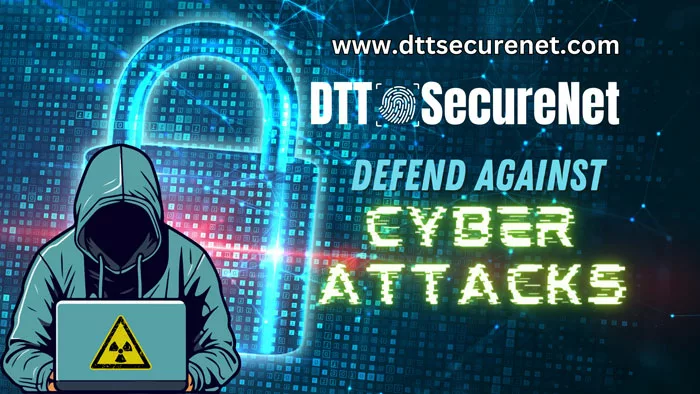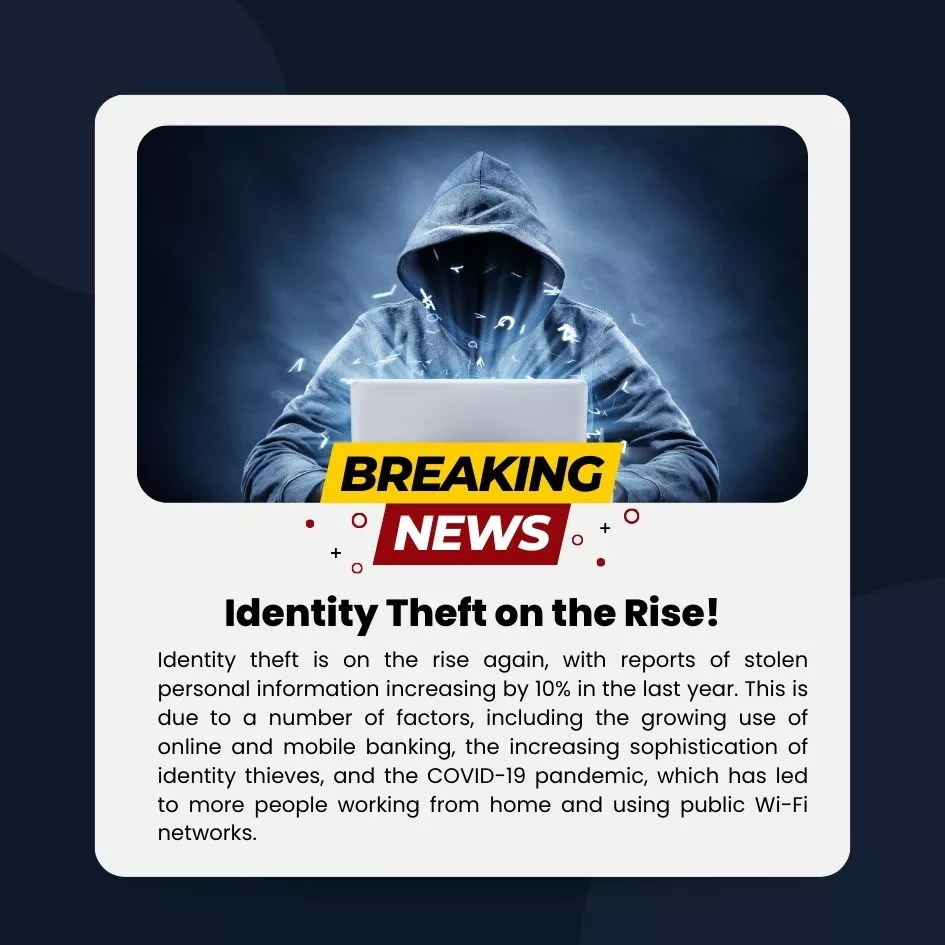How to Prevent Identity Theft
Identity theft is a serious crime that can lead to an awful experience for the victim. This is how you can prevent it.

About
How to Prevent Identity Theft
Secure your personal information. This includes your Social Security number, driver’s license number, credit card numbers, and passwords. Do not share this information with anyone you do not trust, and be careful about where you enter it online.
Be wary of phishing scams. Phishing scams are emails or text messages that appear to be from a legitimate company, but are actually from scammers trying to steal your personal information. Do not click on links in these emails or text messages, and do not enter your personal information on any websites that you do not trust.
Monitor your credit report. Your credit report is a record of your financial history. It is important to monitor your credit report regularly to look for any suspicious activity, such as unauthorized accounts or inquiries.
Place a fraud alert on your credit report. A fraud alert is a free service that tells creditors to take extra steps to verify your identity before opening a new account in your name.
Use strong passwords and change them regularly. Your passwords should be at least 12 characters long and include a mix of uppercase and lowercase letters, numbers, and symbols. You should also change your passwords regularly.
Be careful about what information you share online. Do not post your Social Security number, driver’s license number, or other sensitive information on social media or other public websites.
Keep your software up to date. Software updates often include security patches that can help protect you from identity theft.
Be aware of the risks of public Wi-Fi. Public Wi-Fi networks are not secure, so you should avoid entering your personal information on them.

1) Secure your personal information
his includes your Social Security number, driver’s license number, credit card numbers, and passwords. You can keep this information in a safe place, such as a locked file cabinet or a password manager. You should also be careful about where you enter this information online. Only enter it on websites that you trust and that have a secure connection (HTTPS).
Clear examples on how to do this:
*Keep your Social Security card in a safe place, such as a locked file cabinet or a safe deposit box.
* Do not carry your Social Security card with you unless you need it.
* Shred any documents that contain your Social Security number, such as old tax returns or bank statements.
* Create strong passwords for all of your online accounts and change them regularly.
* Do not use the same password for multiple accounts.
* Avoid using personal information, such as your birthday or your child’s name, as part of your passwords.
* Be careful about what information you share online. Do not post your Social Security number, driver’s license number, or other sensitive information on social media or other public websites.
2) Be wary of phishing scams
Phishing scams are emails or text messages that appear to be from a legitimate company, but are actually from scammers trying to steal your personal information. These emails or text messages may ask you to click on a link, provide your personal information, or update your account information. Do not click on any links in these emails or text messages, and do not provide any personal information. If you are unsure whether an email or text message is legitimate, you can contact the company directly to verify.
Here are some examples of phishing scams:
*You receive an email from your bank asking you to update your account information. The email contains a link that you are asked to click on.
* You receive a text message from a shipping company saying that your package has been delivered. The text message contains a link that you are asked to click on.
* You receive an email from a government agency asking you to provide your personal information to verify your identity.
*You receive a message in LinkedIn or an email from a potential employer offering you a very attractive job offer. This version is fairly new. Scammers use social media to reach out with an offer that seems amazing or “too good to refuse” Once you accept to continue and respond their message or email, they will proceed to say that the project is still quiet secret and will send you a file containing information about this “project”. within these files there will be some relevant photos about products or service they’re offering or the “company” is offering and an additional file that is named “application” or something else which is supposed to contain the contract and the conditions of the offer for you to sign. This file will be an executable file or .EXE (stands for executable). Once this file is opened and executed (double click on it), the file will open (or not) but the malicious code in it will on the background. At this point you will have infected your computer, however, this will likely be totally silent and you will not be aware of the fact that you just created a backdoor for a criminal to see and download all content in your computer.
Of course after this action is executed, you will not hear back from this so called employer again. This is a good place to say that another form of crime can take place here such as randsomware or the destruction of your computer from within as an example.
—If you receive an email or text message that you think might be a phishing scam, do not click on any links in the message. Do not provide any personal information. Instead, contact the company or organization directly to verify the message.
3) Monitor your Credit Report
Your credit report is a record of your financial history. It is important to monitor your credit report regularly to look for any suspicious activity, such as unauthorized accounts or inquiries. You can get a free copy of your credit report from each of the three major credit bureaus once per year at AnnualCreditReport.com.
Here are some things to look for when monitoring your credit report:
* Any accounts that you do not recognize
* Any inquiries that you did not initiate
* Any changes to your credit score
If you see anything suspicious on your credit report, you should contact the credit bureaus and the creditor involved.
4) Place a fraud alert on your credit report
A fraud alert is a free service that tells creditors to take extra steps to verify your identity before opening a new account in your name. You can place a fraud alert by contacting one of the three major credit bureaus.
Here are the steps on how to place a fraud alert:
1. Contact one of the three major credit bureaus: Equifax, Experian, or TransUnion.
2. Provide your name, address, and Social Security number.
3. Explain that you want to place a fraud alert on your credit report.
4. The credit bureau will ask you some questions to verify your identity. 5. The credit bureau will place the fraud alert on your credit report.
The fraud alert will stay on your credit report for 90 days. You can renew the fraud alert for an additional 7 years.
*We advise to check and corroborate this with your personal credit card company or bank.
5) Use strong passwords and change them regularly
Your passwords should be at least 12 characters long and include a mix of uppercase and lowercase letters, numbers, and symbols. You should also change your passwords regularly. You can use a password manager to help you create and manage strong passwords.
Here are some tips for creating strong passwords:
* Use a mix of uppercase and lowercase letters, numbers, and symbols.
* Do not use dictionary words or common phrases.
* Do not use your name, birthday, or other personal information.
* Change your passwords
A great solutuion which is both convinient and effective is the use of a password manager. We recommend you to see this following page HERE
We also recommend you to use physical keys if you can afford as they provide a very strong way of authentication and is extremly difficult from a remote attacker to enter your accounts if you have this methodology. See more about it here.
For the last three points of this article, we can only say that you should be aware of them (information shared publically online, updating software when needed and the use of public WiFi), and I’d like to speak about the use of public WiFi in public places such as airports, cafes, hotels, etc.
The use of a free WiFi, without a password, means that is open, this means open for you but also open for criminals that with the use of common devices will be able to see all the inputs you write including passwords and other information. This is because the information on open networks is not encrypted and reflected as you write it.
If you must use public WiFi, you should use a VPN service such as NordVPN or SurfShark VPN.
A VPN will encrypt any data you request and provide making it more difficult for criminals to see. Find the best VPN service for you here.
SUMMARY – HOW TO PREVENT IDENTITY THEFT
To summarize this article on how to prevent identity theft, we can say that identity theft is a serious crime that can have a devastating impact on your financial and personal life. There are many ways to prevent identity theft, but the most important thing is to be aware of the risks and to take steps to protect yourself. Education is key. Stay safe.
Send me an inquiry to the following email: [email protected]
*Note that when you send me an email, I may keep your information to reply for a relevant request and for marketing purposes relevant to your interests. This is done according to our Privacy Policy and in accordance with the GDPR.

